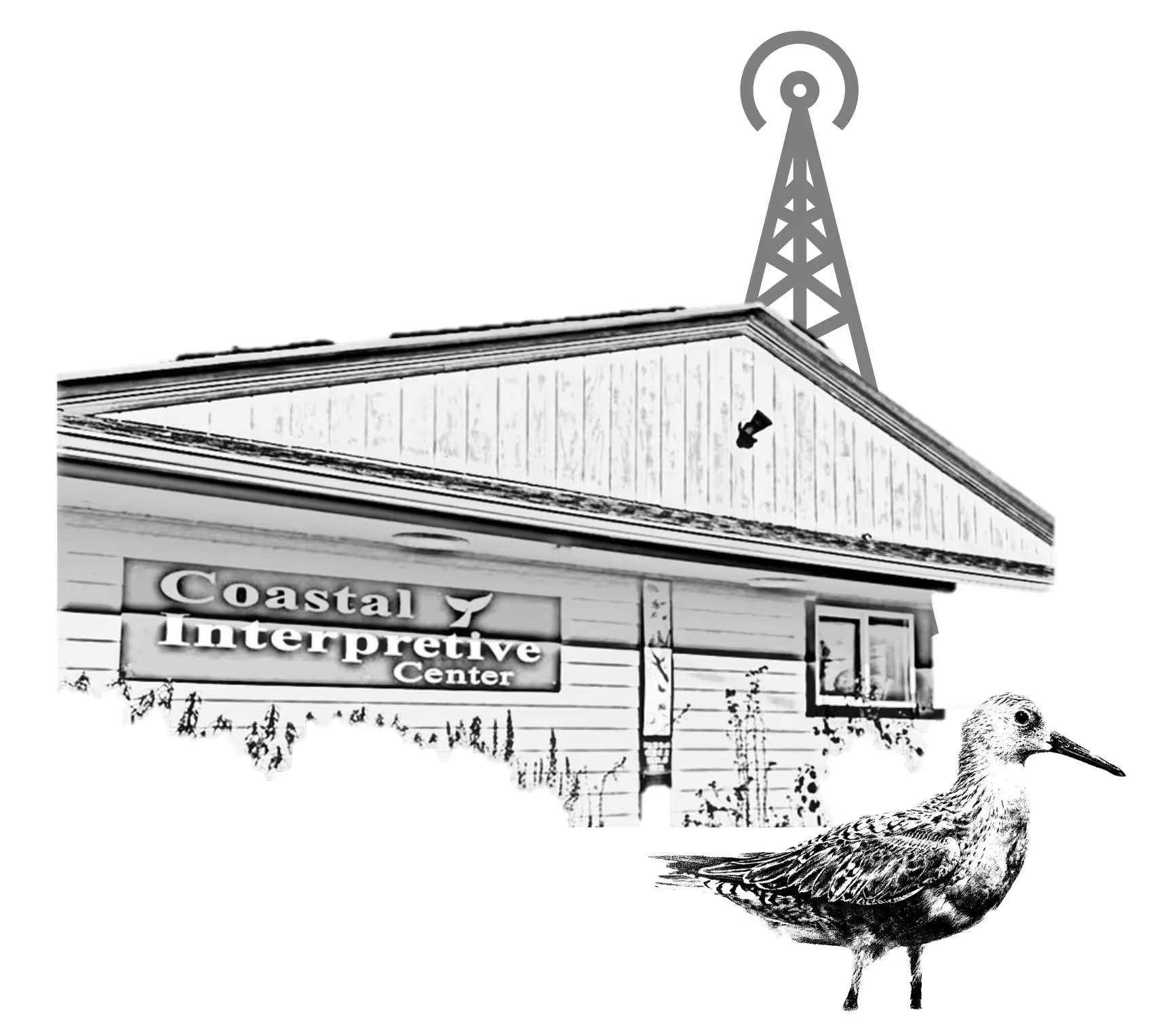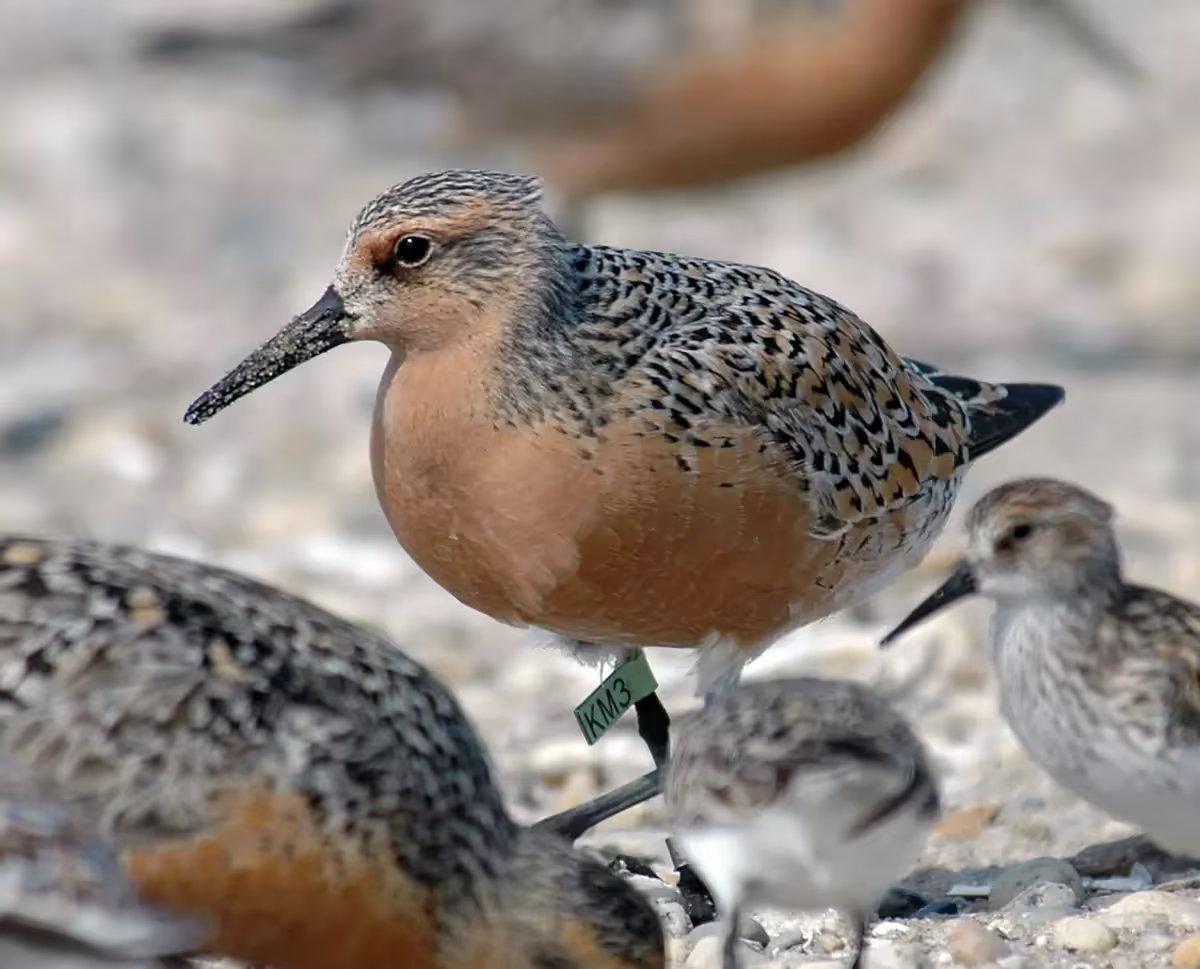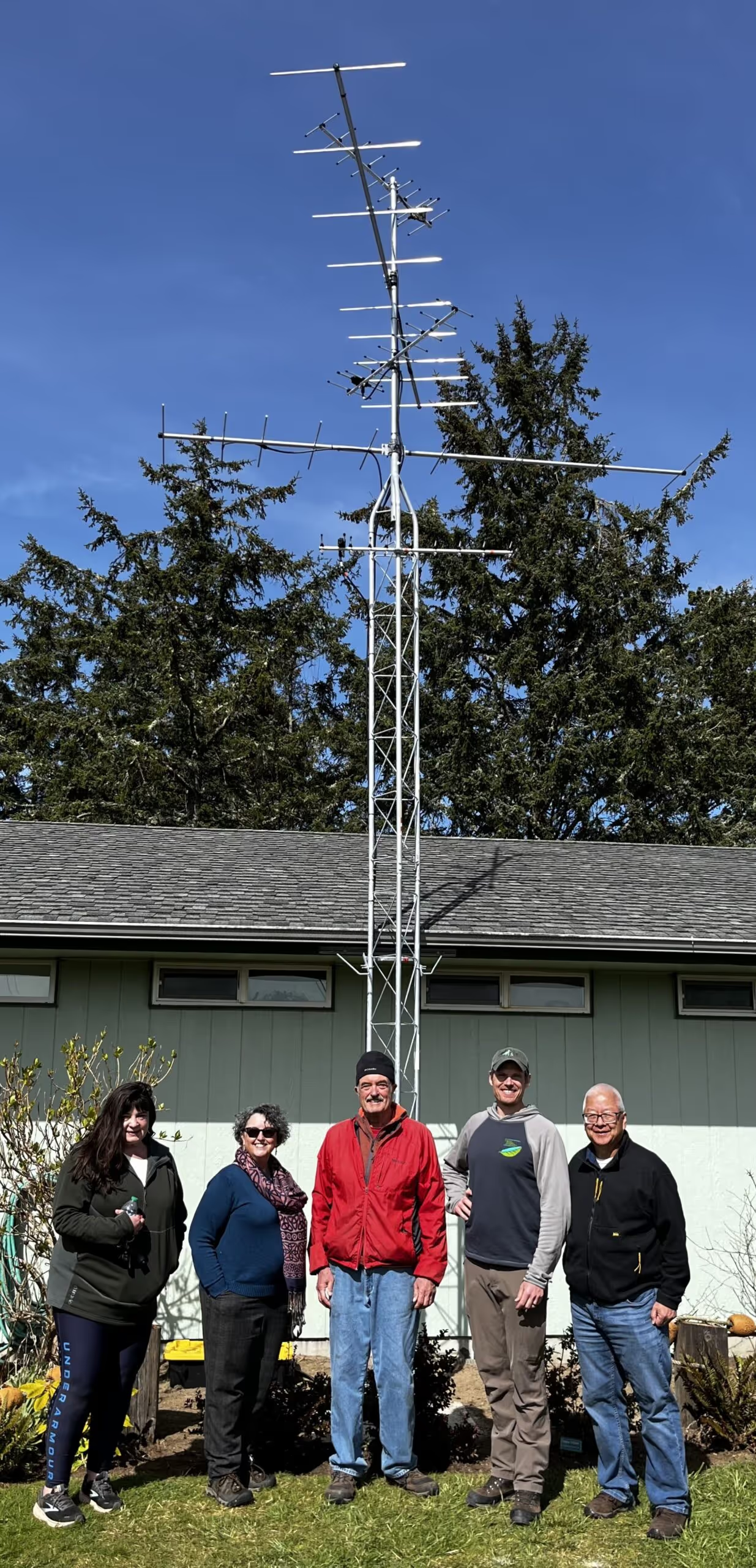The Motus Tower: A migratory shorebird wildlife tracking system


The Coastal Interpretive Center in Ocean Shores installed a Motus Wildlife Tracking System tower on 27 March 2023. Why? Because we have many species of birds stopping at Ocean Shores or flying over while on migration and we want to know all about these birds.

The BirdCast online dashboard estimates that hundreds of thousands to over a million migratory birds fly over Ocean Shores and Grays Harbor County every night during the peak of the spring and fall migrations. Some of these birds are shorebirds. Over 500,000 shorebirds migrate through Grays Harbor annually. They may come from as far south as Argentina and as far north as Alaska. Some of these birds are of conservation concern. Given the migratory nature of these shorebirds, it is difficult to track their movements using traditional means such as banding and recapture. Radio telemetry is an efficient and accurate way to observe bird migration.
In radio telemetry studies, birds are tagged with small radio transmitters by scientists to track their movement. The Motus tower picks up the signals from the birds relaying information on their movements, ecology, and behavior, providing data that scientists and conservationists may use to help conserve these birds. Small transmitters are attached to shorebirds, usually weighing no more than 0.15 g. Researchers have tested whether these transmitters impact bird behavior or movement and have found that they have little to no impact to date. Some birds have carried the transmitters for over 15 years. According to Julian Garcia Walther, a researcher with Pronatura Noroeste, that is the equivalent of circumnavigating the globe 1.5 times!
The radio signals from the transmitters are detected as the birds fly near each tower. An array of towers along the Pacific Flyway migration routes allows researchers to understand the specific pathway used by the birds, when they arrive and depart, and the length of stay at key sites such as Grays Harbor, Damon Point, and Oyhut Wildlife Recreation Area. The Pacific Flyway is connected by numerous Motus towers. The southernmost tower is about 200 miles (~300 km) north of the tip of South America. The northernmost tower is near Beluga, Alaska across Cook Inlet from Anchorage. The distance between these two towers is over 9000 miles (~ 14,000 km)!
Very few species of migratory shorebird fly this distance. Most fly shorter routes. For example, a relatively common shorebird seen in Grays Harbor is the red knot. Some populations of red knot fly from the Pacific Coast of Mexico to the Copper River Delta in Alaska. Population numbers of these red knots are in decline and they are threatened by a changing climate, making them a species to study by conservation biologists who ask many questions. These questions include: When do the red knots migrate? Do males and females migrate together? Where do they stopover to rest and eat along their migration routes. What is the quality of the food they consume while at stopover habitats? How closely related are the different populations of red knots? The Motus towers help conservation researchers answer these questions.

The Motus Wildlife Tracking System (motus.org) is composed of a community of scientists and natural resource managers who study and conserve migratory birds as well as some butterflies and dragonflies. Partner organizations and researchers provide data through the tower tracking network for their own work and share it with other researchers and the public. The U.S. Forest Service International Programs funded a Motus tower in Ocean Shores. The Motus tower was erected at the Coastal Interpretive Center on 27 March 2023. This new tower fills a gap in the Motus network along the Pacific Flyway. It also completes coverage for Grays Harbor in tandem with the Motus tower erected near the Grays Harbor National Wildlife Refuge. The tower at the Coastal Interpretive Center coordinates with the Chugach National Forest in Alaska, the U.S. Fish and Wildlife Service, and Pronatura Noroeste to study red knot migration patterns, stopover sites, and feeding behavior.

As part of the Motus tower network, the Coastal Interpretive Center partners with two important federal agencies. The International Programs Office of the U.S. Forest Service engages with domestic and global partners to conserve habitat of migratory species and keep declining birds and butterflies off the endangered species list. The U.S. Fish and Wildlife Service manages an amazing network of public lands and waters called the National Wildlife Refuge System. Five of the more than 560 Refuges are found along Washington’s Pacific Coast including the Grays Harbor and Willapa National Wildlife Refuges. These sites protect iconic species and provide opportunities to view wildlife.
Another reason that the International Programs of the USFS and the USFWS are interested in this region is that two shorebird habitats have been listed as having hemispheric importance by the Western Hemisphere Shorebird Reserve Network. Both Grays Harbor and Willapa Bay meet the WHSRN criteria of being hemisphere reserves with at least 500,000 migratory shorebirds observed annually. The abundant invertebrate communities of these two muddy bays and estuaries provide ample nourishment for the migrating shorebirds. Nourishment that they need to fly the long distances to their nesting grounds in Alaska and the Arctic!
The Motus tower at the Coastal Interpretive Center starting receiving signals from migrating shorebirds on 29 March 2023. New data are uploaded into the Motus database within a few days to weeks of when data are received. To date, we have tracked dunlins, red knots, and a least sandpiper. These data are available to the public and can be found at motus.org. Follow our simple guide to find and observe the data on shorebird migrations. Of course, the staff and volunteers of the Coastal Interpretive Center are always happy to help you navigate your way to learning more about shorebird migration along the Pacific Flyway!

Acknowledgements
Thanks for sharing your knowledge about migratory shorebirds and/or for setting up the Coastal Interpretive Center’s Motus tower: Jim Chu, USFS International Programs, Migratory Bird Program Specialist; Vanessa Loverti, USFW Regional Shorebird Coordinator; Nick Docken, USFS Wildlife Biologist; Joe Buchanan, WDFW Biologist; and Julian Garcia Walther, Pronatura Noroeste Shorebird Biologist. Thanks to Larry Hinebaugh, Robert Krueger, and Dennis Hogan for assisting with the Motus tower installation.

For more information see www.interpretivecenter.org. If you want to find out more about Motus see www.motus.org.
Sources:
BirdCast. 2023. Realtime Predictions of Bird Migrations. dashboard.birdcast.info. (Last accessed 22 September 2023).
Buchanan, J, J. Johnson, M. Bishop, L. DeCicco, N. Hajdukovich, L. Salzer, V. Loverti, R. Carmona, N. Arce, V. Ayala, A. Hernández-Alvarez, W. Michaelis, and B. McCaffery. 2019. Does radio transmitter attachment influence resighting rates of Red Knots in the Pacific Flyway, USA? Wader Study 126(2): 151–154. doi:10.18194/ws.00150
MOTUS. 2023. Motus Wildlife Tracking System. Motus.org. (Last accessed 22 September 2023).
Pronatural Noroeste. 2023. Conservation of the flora, fauna, and priority ecosystems of Northwest Mexico. pronatura-noroeste.org. (Last accessed 22 September 2023).
USFWS. 2023. National Wildlife Refuges. fws.gov/program/national-wildlife-refuge-system. (Last accessed 22 September 2023).
USFS International Programs. 2023. fs.usda.gov/about-agency/international-programs/why-we-work-internationally. (Last accessed 22 September 2023).
WHSRN. 2023. Western Hemisphere Shorebird Reserve Network. whsrn.org. (Last accessed 22 September 2023).
© Barbara Hayford, September 2023
Touch whale bones, examine shipwreck artifacts and connect with the coast's living history.

Support our mission, get involved in educational programs, or contribute through donations and volunteering.